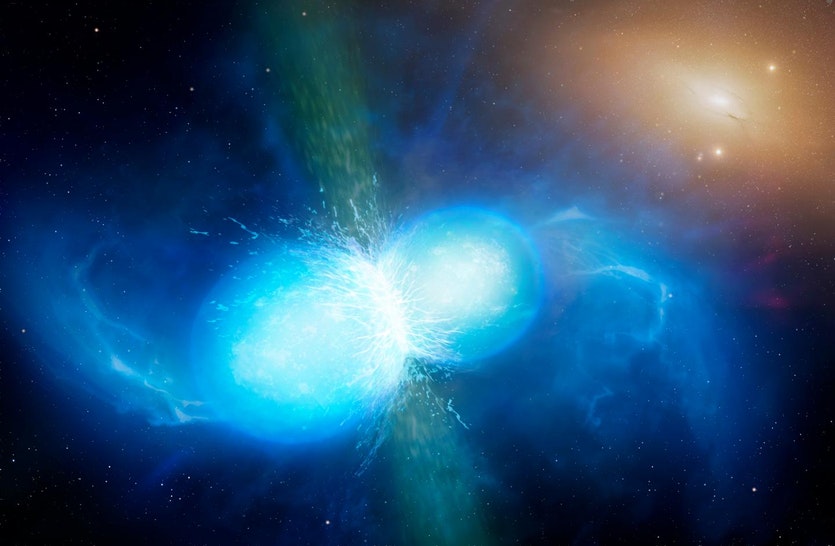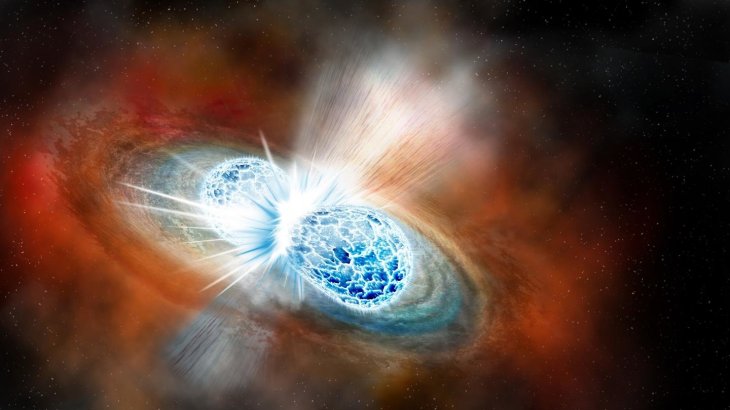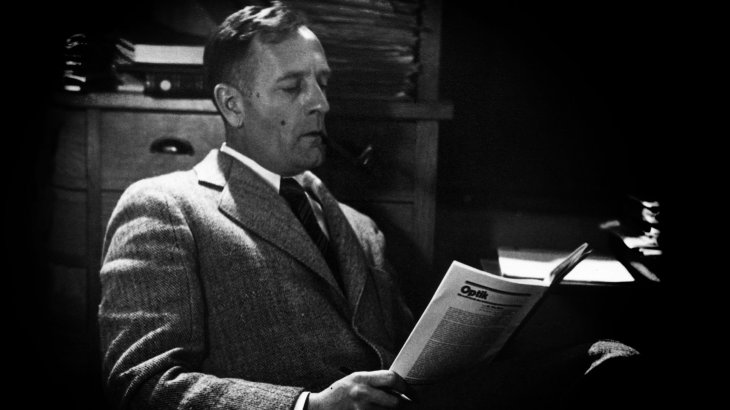Neutron Stars Crashes Can Help Us Calculate Our Universe Expanding Rate
Aadhya Khatri - Feb 26, 2019

By using the LIGO, astronomers can tell how far the collision is from Earth and with the bright flash it generates, they can measure the system’s speed.
- Scientists Discover That Earth's Atmosphere Stretches Beyond The Moon
- Galaxies Without Dark Matter Are Real, Two New Studies Confirm
- Nuking Asteroids Coming To Earth Is Harder Than We Thought
Survey Neutron Stars might help us know the speed at which the universe’s size is increasing. The year 2017 saw the first observation of a collision of two stellar objects. The result was a flash as bright as a billion suns in total and gravitational waves, disturbances in the curvature of space-time.

A neutron star collision
The waves are detected by LIGO (short for Laser Interferometer Gravitational-Wave Observatory in the US) while the crash was 130 million light years far from us.
This precious incident provided solid proof for the gamma-ray burst theory and an end for the debate of where gold and other elements come from. However, now, astronomers think that the collision can tell us more than that.
Research published on Physical Review Letters revealed that by studying the gravitational waves generated by these crashes, astronomers can finally have an answer for the question of at what speed the universe is increasing in size.
Before this finding, scientists have used other methods to calculate this rate, which is called the Hubble constant. However, the results they came up with were different from each other. This rose the concern of whether what we know of the universe and its final fate was accurate.
It was not until the observation of neutron stars’ collision that we came to a more reliable result.

The Hubble constant was named after Edwin Hubble
According to cosmologist Stephen Feeney, by studying 50 of such crashes, the best way to calculate the Hubble constant was found. He also shared that the time they needed to finish the calculation was about 5 to 10 years.
By using a system like the LIGO, astronomers can tell how far the collision is from Earth and with the bright flash it generates, they can measure the system’s speed. This information paired with the Hubble-Lemaitre Law can result in the Hubble constant. The team also came up with the number of crashes we need, which is only 50 collisions.
Hiranya Peiris, another member of the team said that this finding could help us determine how fast the universe is growing and enhance our current cosmological model.
Featured Stories

Features - Jul 01, 2025
What Are The Fastest Passenger Vehicles Ever Created?

Features - Jun 25, 2025
Japan Hydrogen Breakthrough: Scientists Crack the Clean Energy Code with...

ICT News - Jun 25, 2025
AI Intimidation Tactics: CEOs Turn Flawed Technology Into Employee Fear Machine

Review - Jun 25, 2025
Windows 11 Problems: Is Microsoft's "Best" OS Actually Getting Worse?

Features - Jun 22, 2025
Telegram Founder Pavel Durov Plans to Split $14 Billion Fortune Among 106 Children

ICT News - Jun 22, 2025
Neuralink Telepathy Chip Enables Quadriplegic Rob Greiner to Control Games with...

Features - Jun 21, 2025
This Over $100 Bottle Has Nothing But Fresh Air Inside

Features - Jun 18, 2025
Best Mobile VPN Apps for Gaming 2025: Complete Guide

Features - Jun 18, 2025
A Math Formula Tells Us How Long Everything Will Live

Features - Jun 16, 2025
Comments
Sort by Newest | Popular